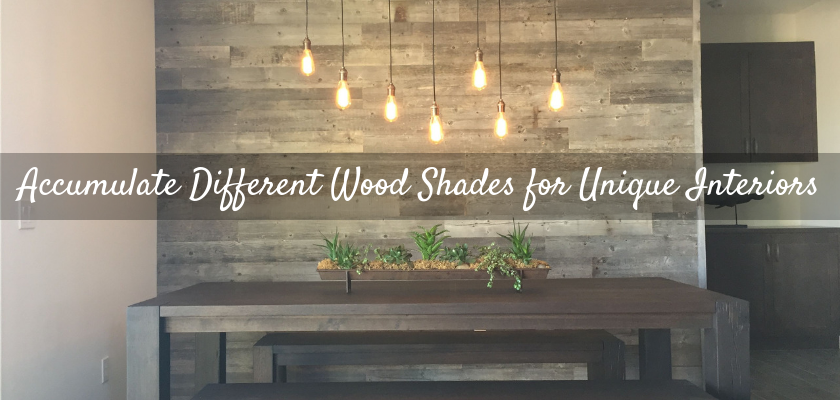Accumulate Different Wood Shades for Unique Interiors

One of the simple and most exciting features of interior decorating is picking out individual pieces of furniture and décor which you love. The more challenging aspect, however, is managing individual pieces into a pleasant, composed arrangement. This can be specifically challenging when trying to coordinate wood tones. From light and bright birch, to the fascinating mid-tones of oak, to the radiant depth of mahogany or cherry, learning how to blend wood colors in interior decorating can be a frustrating but rewarding experience. Keep the concerns below in mind to grab an organized, attractive look when matching wood tones.

Soften the Transition with Textiles
Mixing diverse wood finishes would not mean you need to pile them atop each other. You can if you like the look, however it's also good to soften the transition from tone to tone with textiles. An area rug is a great example. If the finish on the hardwood floor is significantly various from the finish on your cocktail or dining desk, placing a colorful rug on the ground between them makes the difference less jarring.

Wood Stained Palette Wall
Allowing numerous wood stain finishes to coexist can result in a more eclectic, layered look that lends the proper amount of texture and depth. The complete feel is more organic, as if individual pieces have been collected over time. Add lighter, extra rustic wood pieces or accents in with your smooth wood walls with Rust-Oleum Varathane Premium Fast Dry Wood Stains to add beauty to the space, or add sleek, modern dark furniture in with your rustic knotty pine walls.
Go for a Mix of Grain Patterns and Sizes
Mixing a lot of various wood tones will look disordered and messy if you also have a widely numerous color scheme. But color isn't the only part that differentiates a wood finish. The grain pattern and size matter as well. The grain pattern refers to the stripes, swirls or flame-like shapes you can notice in the wood. The grain pattern size is only the scale of those features. Just as you'd use a mixture of fabric patterns and pattern scales to add interest, opt for a mix of varying wood grains as well.

Antique Distressed Furniture
Distressing wood furniture is a brilliant way to add some character to your home. Vintage, antique, and worn-down furniture has a charisma to it that new furniture often does not. One option for attaining this appearance without spending a fortune on antiques is distressing the furniture yourself. You’re going to be doing lots of sanding, painting, and chipping, which means the area you're in is going to get dull. Then make it distress with Rust-Oleum Varathane Wood Grain Enhancer & add adorability to your interiors.
Shop with your Samples
Making a pretty blend of wood finishes need to start long earlier than you take the pieces home. That's why you need to always shop with your wood samples in hand, perfectly as part of a flea market toolkit. With newish wood furniture of identifiable brands, bought new or secondhand, you will be able to order small wood samples from the manufacturers. Else, you can take photos of your wood furniture finishes and check them for color accuracy.

Wrap-Up
There are some things you can keep in mind to gain a specific look or mood. The essential need to know? Natural wood colors are neutrals making them pretty goof proof to integrate into any color scheme. From different manners to patterned grains, here are tips for mixing and matching wood shades like a pro.

